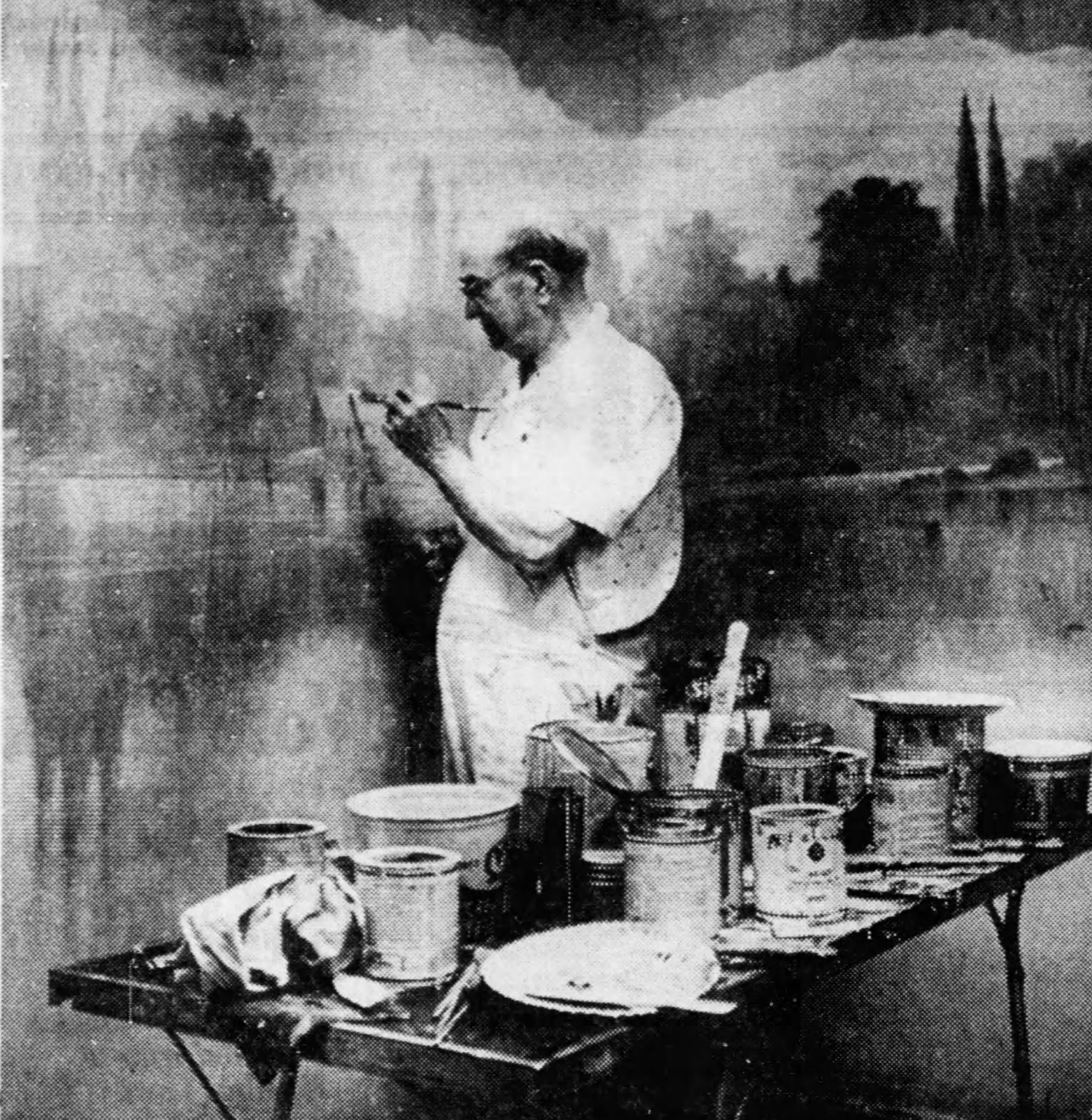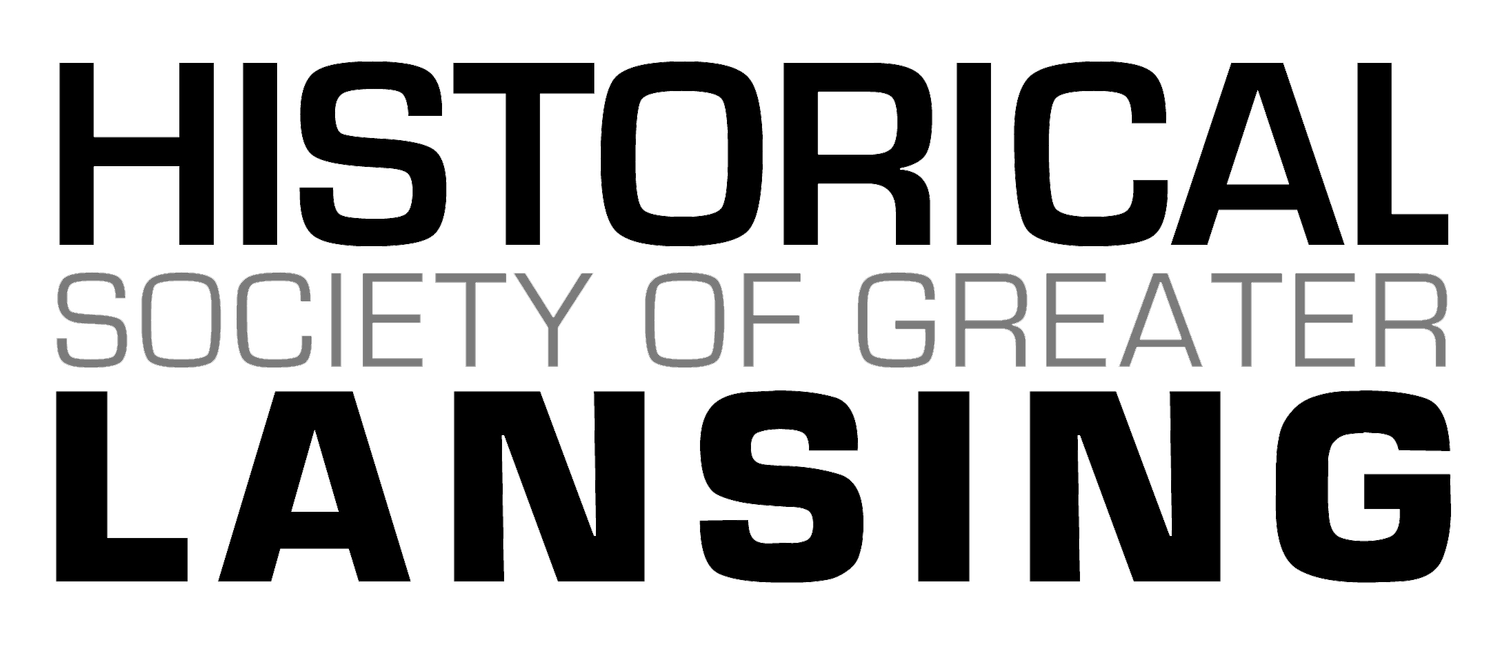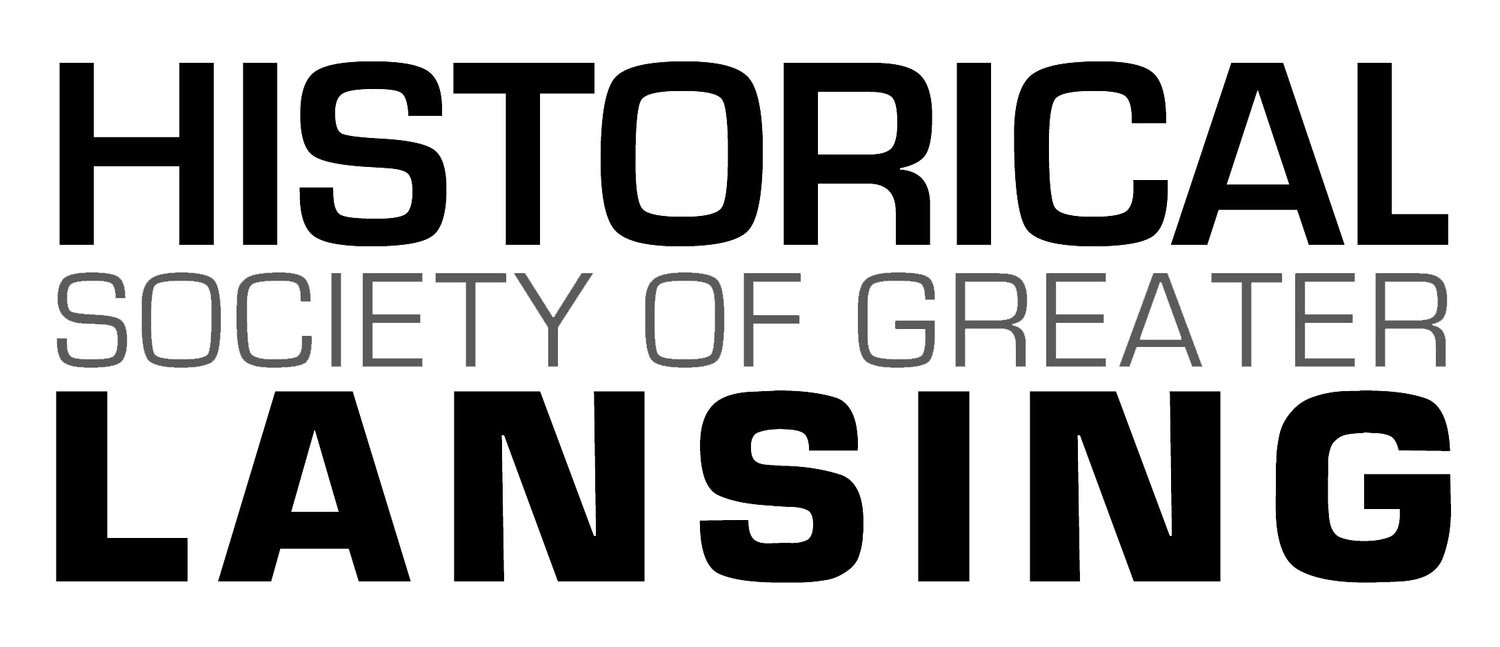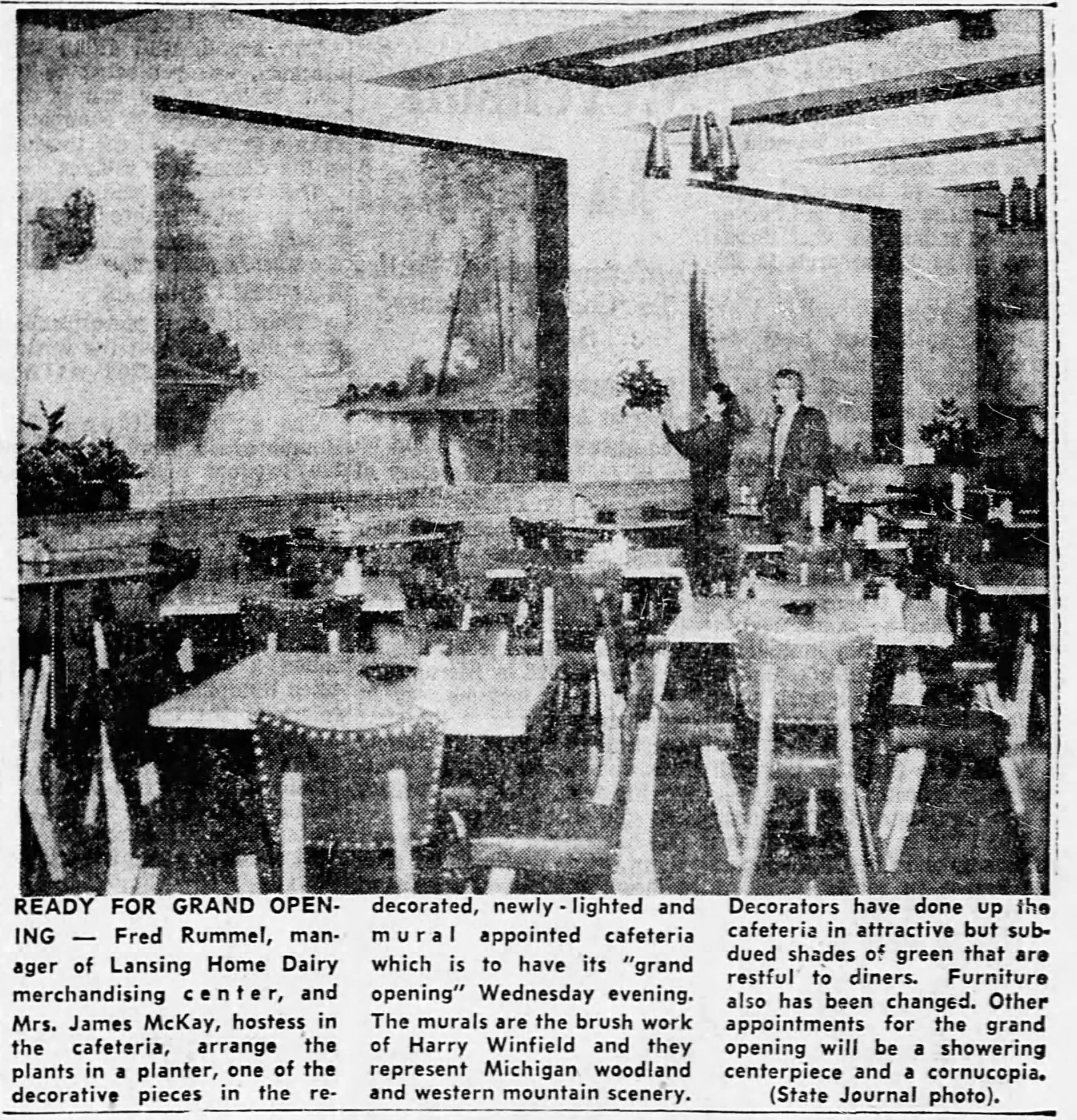
Harry Winfield, Mural Artist
Born in Lansing in 1889, Harry Winfield was a young artist in Lansing in the late nineteenth century all while building his skills as a musician. Before 1910, Harry rented half of Frank Gardner’s drug store (200 North Washington) where he sold phonographs and painted. Before he was 19, Harry had painted more than 300 paintings.
His solution to being forced out of business at a young age resulted in a shift to music. He formed an orchestra which played at the Woodman Hall in North Lansing. He took up the harp and soon began teaching harp. Winfield’s harp studio in Lansing, which had 19 students at its peak, was very successful. He became involved with the Wurlitzer Music Corp. in Chicago, ultimately traveling and working with Wurlitzer as a salesman-demonstrator and before long ran the factory and sales nationwide. Winfield worked for Wurlitzer from 1915 through 1924. For the subsequent two years, 1924 to 1926, he worked for the Lyon-Healy Company, before retiring in 1926 at age 37 to Fresno, California.
In 1948, Winfield returned to Lansing to marry Esther Bauerle and the couple remained in Lansing for an extended period. This stay shifted his career back to Lansing. His first commission in his return to Lansing was for the Home Dairy Company, where he painted four 10’x14’ panels for the cafeteria. He painted winter scenes on mirros at the Famous Grill, did work for the Elk cocktail lounge, shadow-art murals for Knapp’s drapery department, murals in the Central Temple house, and a 70-foot mural at Schmidt’s Supermarket on South Cedar Street. By the early 1950s, his “masterpiece” was considered the interior of King Solomon’s temple at the Lansing Masonic Temple.
Between 1948 and 1952, Winfield painted 132 murals. His works varied greatly in size, as large as 90 feet in one Lansing job to 114 feet in one work in California. He did most of his large private residence works in California, but some major commissions were made in Lansing, including the 1949 mural for the home of Martin Dietrich.
Winfield opened an art studio, returning to his days of teaching, when he came to Lansing in 1948. This studio was located at 123 ½ East Michigan Avenue. He also later operated a studio at 111 ½ West Michigan Avenue, where he taught mural painting.
He partnered with Quarmby & Sons for their Lansing Home Builders’ Show booth in 1949, where he painted his murals live in person. By the early 1950s, he had stopped teaching and was strictly working in murals.
He advertised, “You can have original oil painted murals, of your choice, on the walls of your dining room or the recreation room. Washable and indestructible,” and he was working out of his home at 2000 North East Street. By the 1960s, Harry operated the Winfield School of Murals at 4615 W. Saginaw (1/2 mile west of Waverly) where he taught courses in murals and oil painting with his associate Bud Trump.
Harry Winfield died in Lansing in 1964. Even many years after his death, Lansing real estate listing gave his name as the artist of residential murals, suggesting his prominence and legacy in the city and beyond.
With the onset of the Great Depression in 1929, retirement was no longer sustainable and by 1932 he had to reassess his life and career. He rediscovered his love of painting. He took up work with R.K.O. and Warner Bros. studios as an artist. There, he developed a new technique he called “shadow-art.” Soon, he launched his own art business. Winfield began painting murals in homes, cocktail lounges, and restaurants in California. He became a draw for California nightclubs, where customers would come watch him work and buy him drinks, which he rarely touched and instead was paid for.
Harry Winfield’s known works include:
Home Dairy Company, Lansing, four panel murals of Michigan woodland and western mountain scenery (1948)
John and Pearl Affeldt home, 1027 Seymour Ave., Lansing, mural in private home (1948)
Archie’s Grill murals (n.d.)
Clare Bollert home, 615 Bailey Street, East Lansing, comic strip characters for children’s bedroom (n.d.)
Martin Dietrich home on Cambridge Road, Lansing, mural of Michigan scene and a view of the Mojave Desert in the private den or living room, and a shepherd and sheep scene over the room’s fireplace (1949)
Home Dairy Company, Jackson, two large murals (1949)
Red Ribbon Hall, Eaton Rapids, stage mural (1951)
Central Temple House, Lansing, mural on stage back wall of distant view of forest and lake (1951)
B.P.O.E. (Elks) Lodge No. 196 second floor cocktail lounge redecoration in shadow-art murals (1951)
Elko, Nevada, cattlemen’s hotel dining room mural (1951)
Fresno, California, private residence shadow-art murals (1951)
Schmidt’s Supermarket, South Cedar Street, Lansing, 70-foot mural above self-serve meat and dairy case (1952)
Irah Chase home, 15686 Brook Road, Lansing, dining room shadow-art mural (1953)
St. Petersburg, Florida, restaurant chain mural consultation (1953)
Private residential mural, Lansing (12-20-1954)
Home of State Treasurer D. Hale Brake, Stanton, shadow-art murals (1954)
Stanton church faux polished stone on interior walls (1954)
Karl Story home, 1422 Hitching Post Road, East Lansing, “Water Wonderland” shadow-art mural depicting the southern arm of Lake Charlevoix, 24’ x 5’ on south wall of family room (1957)
Seventh-day Adventist Church on Washtenaw St., mural in the baptistry (1958)
Karl Story’s 42-foot Chris-Craft cruiser, interior mural of snowscape following contour of the boat (1958)
B.P.O.E. (Elks) Lodge No. 196 recreation quarters and clubroom redecoration in “water wonderland” scenes and faux polished sandstone (1958)
Mural in private home in Midland (1959)
Brooks Men’s Shop, Spartan Shop, 209 South Washington, Lansing, outdoor Michigan scenes in murals (1961)
Edward W. Sparrow Hospital cobalt treatment room mural (1963)
Mayor B.D. Shane home, 124 West Lincoln Street, Grand Ledge, restoration of Cliff Stark, circa 1902, murals (n.d.)
Harry Winfield private residential mural, Lansing, 12-20-1954
Photos courtesy of Loni Hackney
Harry Winfield mural at Red Ribbon Hall, Eaton Rapids, 1951
Photos courtesy of Deb Malewski








